In the job interview process, you have one goal: convince the recruiter and hiring managers you are the best candidate for the role and best fit for the company culture, thanks to your skillset, expertise, and knowledge. You’ve already invested time and effort into your hard-won experience, and you’ll want to ensure it pays off with an effective interview.
Whether you’re making a career change or just starting off, managing the interview process is important. According to the Bureau of Labor Statistics, Americans will hold at least 10 jobs during their working life, changing positions about every four years. On the other side, companies generally interview potential candidates at least twice before they decide to hire them. All said and done, that means most people will interview at least 20 times; for many, that number will be closer to 40.
To support your career growth, you’ll want to develop an interview approach. With these 10 steps, you’ll launch the interview process prepared to position your value effectively.
Step 1. Get to know the organization
- Research the organization. Check out the company’s website, online reviews, and press mentions to get a sense of what the organization says about itself and what other people have to say about it. Ensure you have a clear understanding of what the product or service is the company sells, and whether they sell to other businesses, consumers, or both.
- Research the industry. Where does the organization stand in the industry? Is it the industry leader, or is it and up-and-coming player? What about new trends, or hot topics within the industry? Look for industry newsletters and websites, as well as news items.
- Create a list of questions. As you’re learning about the organization and the industry it does business in, keep a list of questions to help clarify your understanding in the interview. Not only will you ensure you have a clear understanding of the business you may be employed by, but you’ll also demonstrate that you were passionate enough to learn about the business and its industry.
Step 2. Get to know the position.
- Make note the knowledge, skills, and abilities required. (Note: these are often referred to as “KSAs”.) Jot down each one, and add to your list anything you have questions about.
- Understand where the position fits into the greater organization. Is this a leadership position, or an individual contributor position? What department will this role be in? Does the position have external or internal customers? What part of the businesses’ product or service does the position contribute to?
- See how you stack up. Align your skills, experience, and expertise to the position’s requirements, and prepare specific examples that support your claims. Don’t expect to match up to everything on the list; instead, highlight the areas where you are aligned and be prepared to discuss how that makes you the best fit.
Step 3. Practice your story.
- Prepare answers to basic interview questions. You can count on interviews asking a core set of questions, and you should prepare answers to these.
- Prepare anecdotes and examples. Prepare other examples that support who you are to supplement what you’ve planned based on the KSAs. For example, do you have an additional skill that isn’t on the organization’s list? Tell the interview about it.
- Rehearse your response to “tell me about yourself.” Nearly every interview will begin with this question. Even though you know yourself well, don’t plan to wing this question. Craft a thoughtful response to this question that explains why you’re a great fit for the position, and why the position is a positive next step for you.
Step 4. Practice your brainteasers.
While not every interview will require problem solving, many will. And while you can’t guess which puzzle an interviewer will through your way, you can decide up front on your strategy for approaching the problem. When you’re armed with a structure, you can curb interview jitters by working through your process. For example, the process might be:
- Restate the question and ask for any other details.
- Brainstorm ideas and solutions.
- Organize your answer.
- Explain your calculations, if any were included.
- Provide a summary.
Step 5. Dress for the occasion.
Check with the recruiter to understand dress code, as dressing appropriately will differ by organization. While you want to err on the side of overdressed, you also don’t want to be so overdressed that you seem like a poor match. And, remember to double check all the little details the night before your interview: pressed clothing, fixed buttons, buffed shoes, and simple accessories. You want the interviewer to notice and remember you, not your interviewing outfit.
Step 6. Pack up.
Don’t wait until the day of your interview to gather your materials. Instead, start compiling these materials in advance, and confirm you have everything the night before. Your briefcase, bag, or portfolio should include:
- Extra resumes printed on quality paper.
- A way to take notes, typically pen and paper. While some tech companies may embrace a Tablet for notetaking, keep in mind you want the interviewer to know you’re engaged in the conversation, and a screen could be a distraction.
- Your list of references. All references on your list should have agreed to be listed to avoid awkward surprises when the organization calls for a reference check.
- Information to complete an application. For example, do you need a specific driver’s license or certification number for the position?
- Portfolio, if applicable.
Step 7. Start early.
While arriving early is certainly part of a successful interview preparation, planning to start interviewing the minute you walk in the front door can set you apart from other candidates. Remember that each person you interact with at the organization, whether they are the hiring manager, the front desk receptionist, or the lobby staff, are a part of the organization. If possible, begin a conversation with someone while you’re waiting; if not, use your time wisely to review your responses and keep your plans top-of-mind.
Step 8. Keep your composure.
Even those most practiced interview candidate may feel nervous on the day of. During the interview, remind yourself to keep your composure in these areas:
- Smile. Not only does this make you seem friendly, it may even help you relax.
- Practice good posture. Sitting up straight makes you appear more engaged.
- Respect space. You want to convey that you’re engaged in the position, but you don’t want to overwhelm your interview. Make sure you sit in a place that doesn’t have you looking over their shoulder at interview notes or simply sitting too close for comfort.
- Manage your expressions. If a question catches you by surprise, take a moment to relay it back for confirmation instead of looking shocked. Or, if you discover something about the position you may not like, try to respond with a follow up question instead of a frown.
- Don’t stress. Remember that you’re also trying to find out if the company is a good fit for you. Try to stay calm and remember the value you bring to the position, and be sure you obtain the information you’ll need to make a decision if they offer you the position.
- Stick to business. When you introduce yourself, stick to business information only. Don’t include personal details like your marital status, children, or age.
Step 9. Respond to your audience.
Nonverbal communication provides critical cues to how your interviewer is feeling, so pay attention to facial expressions, postures, and gestures and adjust accordingly. For example, is your interview starting to glaze over as you’re talking about your last position? Or did they just lean forward when you mentioned a software? Even if you’ve planned to go into more detail, cutting it short to keep your audience engaged can be the right decision in the moment.
When it comes to your verbal responses, it’s important to stay focused. Answer all aspects of the question, and avoid drifting off topic. If you aren’t sure about the question, ask for clarification, or relay it back to the interviewer.
Step 10. Make a connection.
During the interview, include questions that reaffirm your interest in the position.
- What are next steps?
- When do you expect to make a decision?
After the interview, you’ll want to continue the dialogue. Request business cards from your interviewers, so you can follow up with a thank you note. Aim to thank your interview within 24 hours. And, if you interviewed with a team, you should thank each team member, not only the decision maker. You can also connect with the people you met on LinkedIn as another way to stay top of mind.
Follow up on any additional items as quickly as possible. For example, if you offered to share a portfolio, or an additional reference, be sure to do so.
Finally, if you haven’t heard from the organization by the date they provided, contact the interviewer to ask about their decision making.
The interviewing and hiring process can take several weeks, and even if you don’t land the job on your first interview, keep practicing and investing in your interview prep. For even more interview preparation, check out our Definitive Manual for Preparing for a Job Interview.





